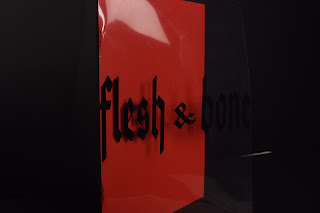Extended Practice has been an exigent and dynamic module that has given me an insight into my specialism through a variety of briefs. This allowed me to determine which briefs worked well and which did not, through analysis and evaluation. The briefs varied in scale, meaning I gained experience with working with shorter, fast paced projects, alongside projects which took 6 months.
Diligent time planning ensured the projects ran smoothly especially when some of them overlapped, although there were many things out of my control that resulted in me having to think on my feet and adapt; such as professional services not printing samples in time, or content not being sent by the client for long periods of time. This allowed me to gain knowledge in planning ahead and being prepared. This is a skill that can be taken forward for industry, as there will be times where I will be working on multiple projects in the future.
The module demanded skills within problem solving, such as when things did not go to plan, for example within the Ceramics brief. Many prototypes broke, which resulted in me having to discuss new ideas on how to approach the next set to try and produce something successful. This also included problem solving within other editorial briefs, for example producing the publications and considering stock, binding and other treatments to ensure all error was avoided. Experience with this is helpful for after graduation, when things may go wrong or not work, and I must approach the brief in new and more effective ways to generate a successful resolution in the end.
Research and contact/communication was another crucial aspect within Extended Practice. A lot of briefs needed primary research and contact from other sources, for example contacting sources for the research brief, conducting surveys and research to establish aims/goals/things to avoid and contacting potential collaborators. This was especially apparent within Brief 05, when I needed external collaboration in terms of producing content for the magazine, and Brief 09 when conducting research and testing the successfulness of the branding resolution. These skills can be taken forward after university, as communication and contact is always a beneficial skill to have within the creative industry.
Throughout extended practice I feel I have attempted to produce resolutions that are as professional as possible, whether that be through professional printing services or ensuring effort and time was put into producing high quality design resolutions. As a result I have predominantly been proud of the projects I have completed for the module, and feel they have allowed me to explore editorial design to a greater depth, along with other design practices such as branding and identity, another area which I am interested in.
The module has also allowed me to discover an aspiration in producing my own magazine, something I have been wanting to do in the future, and allowed me to put this into practice in it’s first stages. Demon Magazine has become a passionate project of mine that I hope can be explored further and developed again after university to hopefully become successful in the future.
Overall I am proud of the effort put into Extended Practice and feel I have evolved as a designer, communicator and creative thinker, and will hopefully be able to translate these skills I have gained into the industry next year.


















































